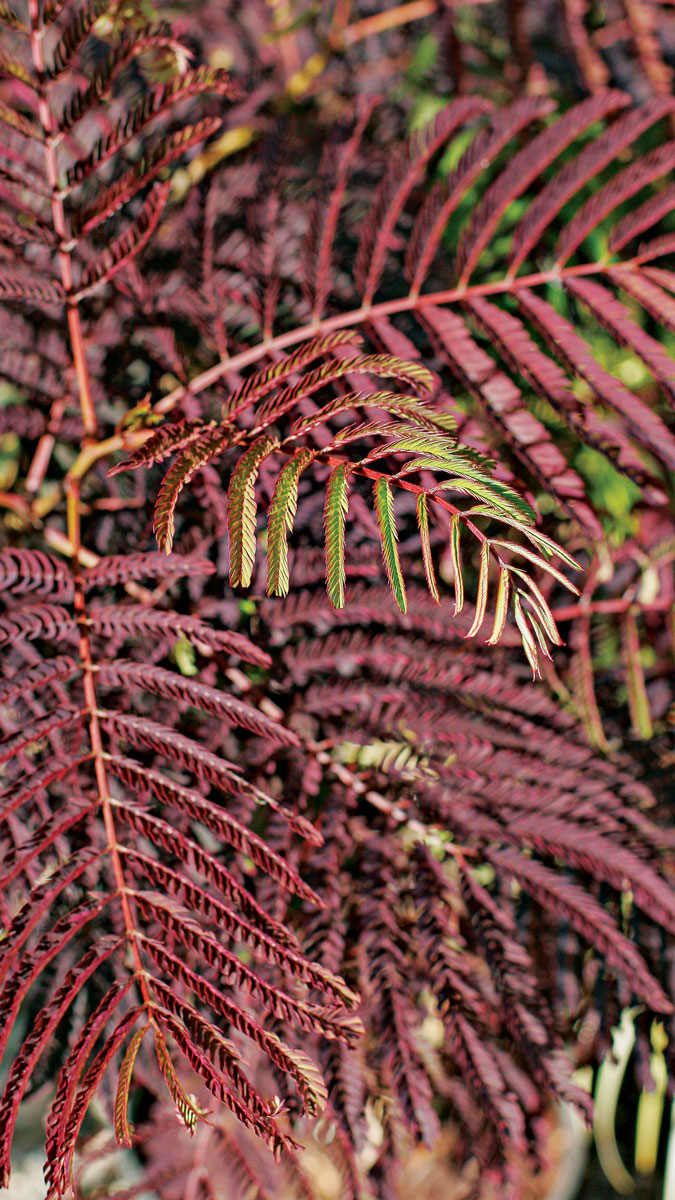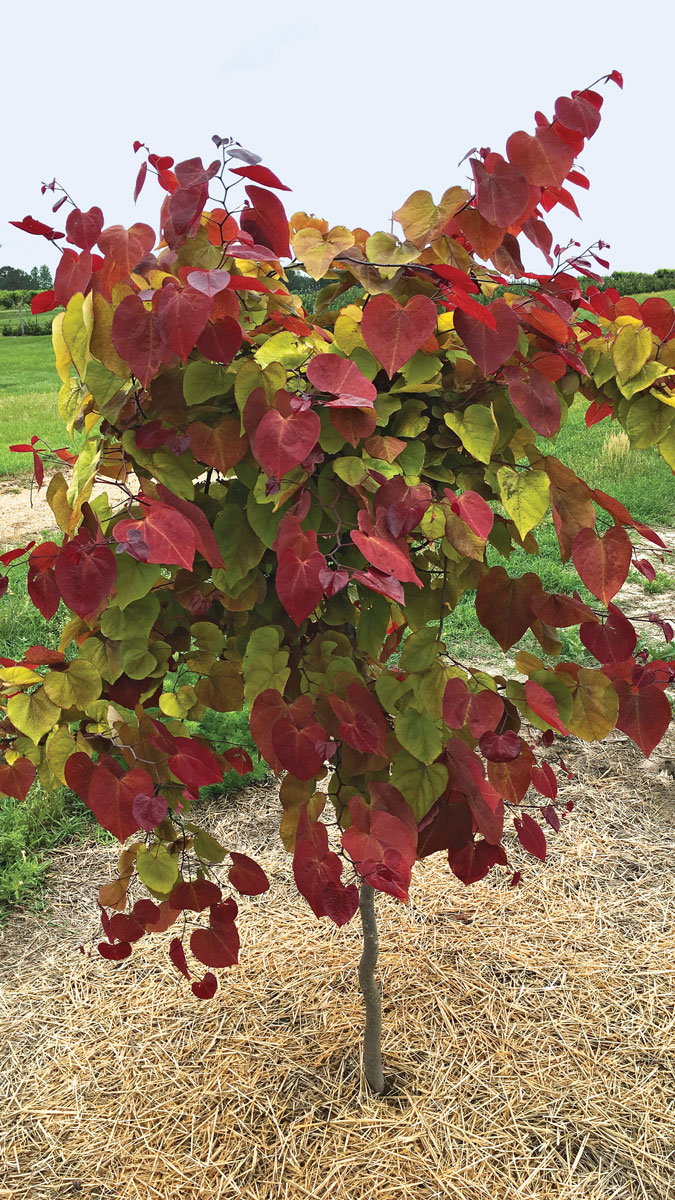Reliable Performers for the Southern Plains
No garden is complete without a backbone of infallible plants

We all want the newest, jazziest plants available, but a garden is not complete without a backbone of infallible plants that provide interest whether your new investments flourish or fail.
Find some tough, multiseason stars for the Southern Plains below. And discover even more reliable performers in Plants to Build a Bed Around.

1. ‘Summer Chocolate’ mimosa
Name: Albizia julibrissin* ‘Summer Chocolate’
Zones: 6–9
Size: 20 feet tall and 15 feet wide
Conditions: Full sun to partial shade; tolerant of a wide range of soil
Native range: Asia
This is a visually stunning, fast-growing deciduous tree with finely divided (almost fernlike) leaves and a graceful fan-shaped habit. Very heat tolerant, it grows in almost any soil that is well draining—even alkaline conditions. Once established, ‘Summer Chocolate’ is drought tolerant but looks its best in evenly moist spots. Be sure to site it in areas protected from high winds, as the branches can snap easily, ruining the tree’s graceful form. New leaves emerge green and darken to a beautiful rich burgundy color with pink powder puff–like flowers emerging in summer, which attract hummingbirds. This variety is less weedy than the species too, with much of its seed appearing to be less robust.

2. Tuff Stuff Ah-Ha® mountain hydrangea
Name: Hydrangea serrata ‘SMNHSDD’
Zones: 5–9
Size: 2 to 3 feet tall and wide
Conditions: Partial shade; evenly moist soil
Native range: Japan and Korea
While its leaves, flowers, and overall stature are smaller than those of the more popular bigleaf hydrangea (H. macrophylla, Zones 6–9), Tuff Stuff Ah-Ha® mountain hydrangea makes up for any perceived shortcomings with its exceptional hardiness, lovely compactness, and the sheer number of blooms it produces. For me, it has also been more resistant to powdery mildew. Mountain hydrangeas typically bloom on old wood, but this selection also blooms on new growth. The flower buds are less prone to freezing in our unpredictable spring weather compared to some other varieties. The color of the blooms will change with soil pH—more blue in acidic soil, more lilac or light pink in alkaline soil.

3. Flame Thrower® redbud
Name: Cercis canadensis ‘NC2016-2’
Zones: 5–9
Size: 15 to 20 feet tall and 15 feet wide
Conditions: Full sun; moist, well-drained soil
Native range: Southeastern United States
A beautiful introduction out of the JC Raulston Arboretum in North Carolina, this stunning tree features a semi-weeping form, small pealike purple flowers in early spring, and leaves that emerge burgundy-red. The foliage changes to orange, yellow, and finally green as it matures. Flame Thrower® is tough as well as beautiful and is tolerant of high heat, high humidity, and even the heavy clay soil that is so common to the Southern Plains. This is a lovely compact redbud—and a great focal point—whose leaves remain bright and clean even through summer. The combination of all the foliage hues on one tree as it morphs during the growing season is stunning.

4. ‘Fast Forward’ muhly grass
Name: Muhlenbergia capillaris ‘Fast Forward’
Zones: 6–9
Size: 24 to 36 inches tall and 24 inches wide
Conditions: Full sun; tolerant of a wide range of soil
Native range: Midwestern United States
‘Fast Forward’ muhly grass is a favorite plant of gardeners inspired by Piet Oudolf. This improved version blooms four to six weeks earlier than the species—as early as late July—and all the way through fall. Its interest goes beyond the flowers, however, thanks to its fine-textured character and the cover it provides for wildlife. This drought-tolerant and deer-resistant selection is perfect for providing a dramatic pop of fall color in either xeriscapes or in beds with other ornamental grasses. ‘Fast Forward’ also has a more compact and symmetrical shape than the species, featuring tight mounds of wispy dark green leaves.
Cynthia Nunes Robinson is the former horticulture manager at Tulsa Botanic Garden in Oklahoma.





Comments
Log in or create an account to post a comment.
Sign up Log in